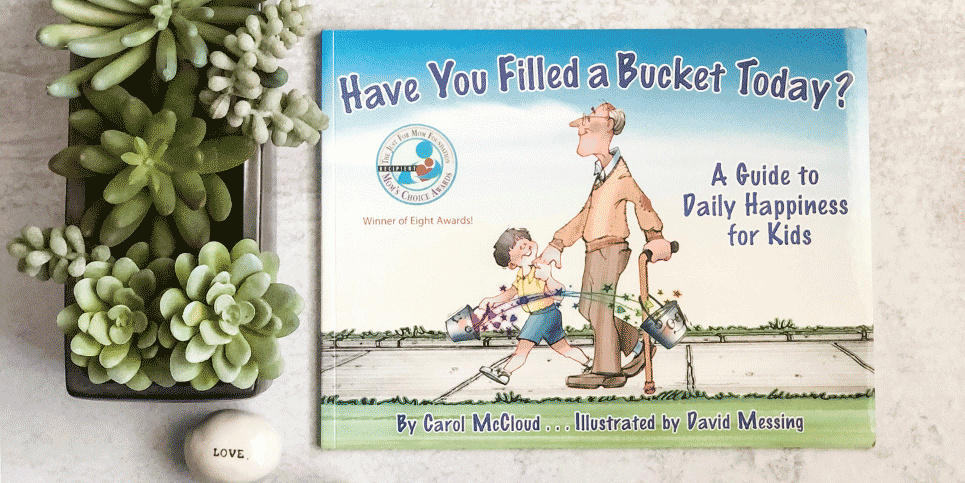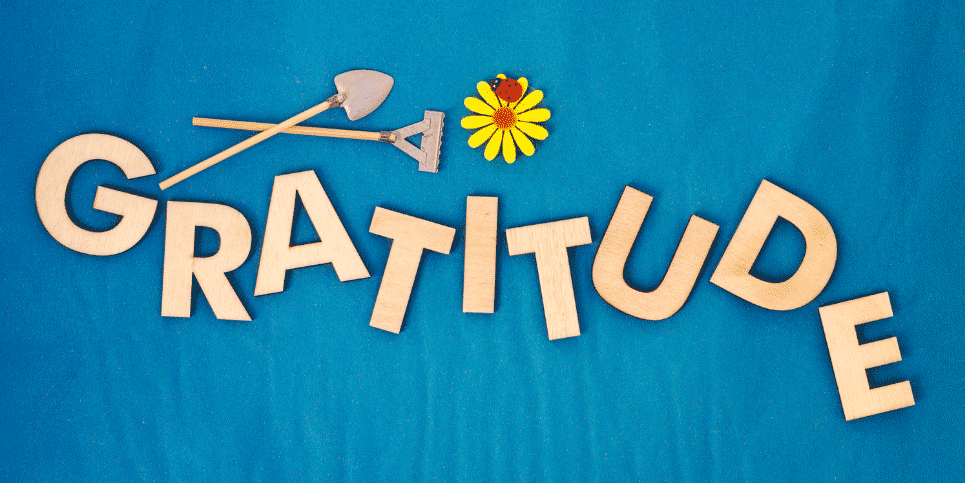The Children’s Book Review | November 14, 2019
Growing Readers: Learning to Love Reading and Writing Column 7
This editorial article was written by Lizzie Mussoline, M. Ed.
Start a Gratitude Journal – Kids and Parents
November is a great time to incorporate a gratitude journal into your lives. This can be done in any way that your family sees fit—there is no right or wrong way! You can provide some direction by suggesting your family writes about and reflects on a thought or prompt. Or, it can be totally up to your family members to decide when and what they decide to journal about. Encourage everyone to include artistic elements such as drawing or pasting in mementos. In our home, we like to work on our journal before bedtime stories. It is a nice way to start to calm down for the night and can improve moods. Here are some suggestions on how to get started with a gratitude journal:
- Simple Journal Formula: WRITE, DRAW, EXTEND. Extend could mean a variety of things! For instance, if your child journals about being grateful for their pet, do some research on how to support your local animal shelter.
- Don’t worry about spelling! If your child seems wrapped up in spelling everything correctly while they journal, preface this activity by letting your child know that this is about practicing gratitude, not spelling. Think this sounds counterintuitive? If your child is so concerned about spelling everything correctly, it will take the joy and relaxing aspect out of it. Just remind your child to listen to the sounds in the word if they like to “stick to the rules”. Also, if it really seems to be important to them, encourage them to jot to their heart’s content and later you can look at it together and work on the spelling.
- Having trouble getting started? Here are a few gratitude journaling prompts that we love to help guide you and your family:
- Personalize your journals! Don’t forget to have fun personalizing your journals with photographs or drawings—anything you like that makes you want to use your journal all the time!
- Let these prompts inspire your own ideas for conversation. Having these prompts as conversation starters at the table is a fun way to connect at dinner time. Or take turns sharing a journal entry over a meal. This is also a fantastic way to work on verbal expression.
- Gain journal inspiration by spending time in nature. Something as simple as getting outside and taking in the beauty of your surroundings and breathing in fresh air is a great way to instill an attitude of gratitude. It’s also a great time to collect artifacts, or journal about and discuss the experience to enhance speech/language development.
- Turn your gratitude into a thank you note. Who doesn’t love getting a thank you note? Have a special place in the house where kids can easily access stationary, addresses and stamps. You may even want to order personalized stationery or send notes on art work or school assignments that your kids are proud of. Younger children can dictate their notes to you. This is certainly a lovely act of service that will be sure to fill someone’s bucket!
- Another great topic to journal about or “Extend” activity is acts of service. Volunteering as a family helps put your family values in action, promotes building connections, helps others, and helps build a sense of gratitude. Afterward, family members can write, draw, or discuss their experiences. Need help getting started? Here are some helpful resources:
- https://www.scholastic.com/parents/family-life/parent-child/10-fun-community-giving-ideas.html
- 1. DoingGoodTogether.org: Packed with suggestions for volunteering with your family whether you have five minutes (really!) or five hours.
- 2. BigHeartedFamilies.org: New ideas for age-appropriate, kid-tested projects posted daily.
- 3. VolunteerMatch.org: Plug in your zip code to see where your town could use a helping hand. Then click the “kids” checkbox to find a project that’s right for your crew.
- 4. Family-to-Family.org: Click the “Kids Helping Kids” tab for simple ways that your little one can directly connect with a child in need, from sending a birthday party in a box to organizing a book drive.
 Read Books about Gratitude
Read Books about Gratitude
Never underestimate the power of teaching through an amazing picture book. Situations or topics often arise in our lives that may seem hard to discuss. Age-appropriate books are the best way to approach these topics when you may not be sure how to do so yourself.
In conjunction with reading aloud about gratitude, create some sort of gratitude visual of your choice, such as a “Gratitude Turkey” where you and your kiddos can add feathers to the turkey that include things your family is grateful for. Kids of all ages would also enjoy a gratitude and/or kindness jar. Have your family jot down moments of gratitude or kindness throughout the week and read through the notes, reflect and discuss whenever it seems necessary or appropriate such as a rough moment, or just as a way to bring the family together over a meal. See below for a list of picture books that help instill gratitude. If you would like to dig deeper into this concept, there is more information on using a gratitude jar in the Growing Readers article Literacy Tips and Activities That Work for Families.
A Final Thought
Try to remember that despite what we may think, our children are always watching and listening and learning by our example. Be sure to share your own moments of gratitude. It is so important and powerful for our children to see and hear how others express their thankfulness each day. It is also an invaluable learning experience when they see adults go through challenges and still find a way to be grateful for what was learned. What an incredible way to teach resilience.

Picture Books That Help Instill Gratitude
Little Elliot, Big Family. Mike Curato. 2015. Henry Holt.
Look and Be Grateful. Tomie DePaola. 2015. Holiday House.
Thank You and Good Night. Patrick McDonnell. 2015. Little, Brown & Co.
Thanks a Million. Nicki Grimes. 2006. Greenwillow Books.
Gratitude Soup. Olivia Rosewood. 2009. CreateSpace Independent Publishing.
Secret of Saying Thanks. Douglas Wood. 2005. Simon & Schuster Books for Young Readers.
Being Thankful (and create Gratitude Rocks). Mercer Mayer. 2014. Thomas Nelson
How Full is Your Bucket (for Kids). Tom Rath. 2009. Gallup Press.
Have you filled a bucket today? A Guide to Daily Happiness for Kids . Carol McCloud. 2015. Bucket Fillers.
The Gratitude Diaries (For Parents and Young Adults). Janice Kaplan. 2016. Dutton.
You can find even more book recommendations on the theme of gratitude and thankfulness here on The Children’s Book Review.
 Thank you for reading the Growing Readers: Learning to Love Reading and Writing column. Bookmark this Growing Readers Column link or subscribe to our e-newsletter so you do not miss out on the monthly reading tips. Literacy and Gratitude: How to Promote Literacy and Instill Gratitude was written by Lizzie Mussoline, M. Ed.—follow her on Instagram: @wildflower_learning_denver.
Thank you for reading the Growing Readers: Learning to Love Reading and Writing column. Bookmark this Growing Readers Column link or subscribe to our e-newsletter so you do not miss out on the monthly reading tips. Literacy and Gratitude: How to Promote Literacy and Instill Gratitude was written by Lizzie Mussoline, M. Ed.—follow her on Instagram: @wildflower_learning_denver.



1 Comment
Thanks for your post on gratitude and literacy. I believe in gratitude. As a retired educator, I was thrilled when my third published book, came into the world so it could touch lives with the power of gratitude. BEFORE I SLEEP: I SAY THANK YOU, Pauline Books and Media, 2015, was a finalist for an ACP Excellence in Publishing Awards 2016 in the children’s category and won 3rd place in the Catholic Press Association Book Awards 2016 in the children’s category. It offers a kid-friendly way to teach small children how to examine their consciences at the end of the day and teach them the importance of gratitude. At the end of the book it asks the children to say five things they are grateful for. Imagine how much sweeter the world would be if children learn gratitude early! I believe gratitude and this book can help families through difficult days.
Here’s the book’s trailer: https://www.youtube.com/watch?v=Qbf_KXG73HY